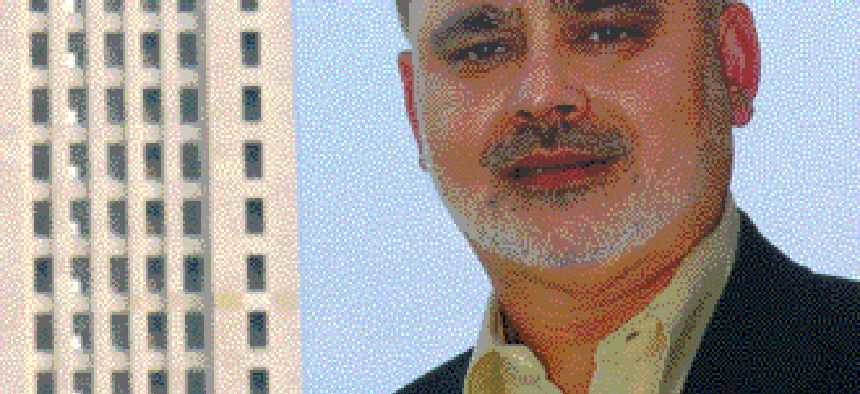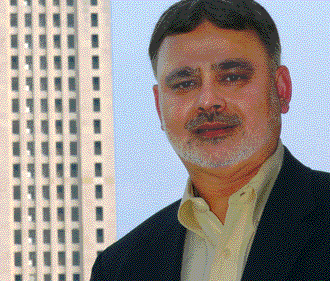State of recovery

When Hurricane Katrina tore through New Orleans last summer, it shut down government and emergency communications, shuttered businesses and left thousands of city residents homeless and reliant on government assistance for everything from food and drinking water to rooftop rescues and financial support.

Louisiana CIO Rizwan Ahmed
John Ballance
Louisiana Gov. Kathleen Blanco (D) in March promoted Rizwan Ahmed from his dual role as CIO of the Natural Resources Department and Group Benefits Office to state CIO. Ahmed, under the guidance of Jerry Luke LeBlanc, state commissioner of administration, is pushing agencies to comply with LeBlanc's pre-Katrina request to develop and implement meaningful disaster recovery plans.
As the 2006 hurricane season opens, Ahmed spoke with Staff Writer Ethan Butterfield about the state's disaster preparedness efforts and its other IT initiatives. The state spends about $480 million annually on IT.
WT: What do you see as the role of IT in disaster preparedness, response and recovery?
Ahmed: There are two major roles. One is interoperability, making sure that the entire state is taken care of for both state and local entities.
The second [arises because] a Katrina-like event certainly wakes up all the business leaders. They say, "It is not an unnecessary evil; we really have to use some disaster recovery money so we can come up with a good business continuity plan, which will include disaster recovery." We have a lot of influence on the agencies in terms of setting up the policies and procedures and the standards, and telling them what is the best possible way it can work.
WT: How will you use IT for disaster preparedness and recovery?
Ahmed: Each agency has its own business continuity plan. Most agencies have that now. And most of the agencies have a contract with large companies that offer mobile and offsite solutions on a membership basis. They bring in a mobile unit with all your technology equipment as well as provide space for people to work.
We also have two data centers backing each other up. The one concern we have, which we are trying to resolve, is that both data centers are in Baton Rouge. They are in two different places, but they are still in the same city. So we are trying to push all of our data to North Louisiana, and after that, we are thinking of coming up with a full-fledged data center in North Louisiana to back us up.
WT: What have private sector companies done to help Louisiana and its citizens with disaster preparedness and recovery since Hurricane Katrina?
Ahmed: This was really phenomenal. I've never seen anything like this before, where the vendor community jumped in and said, "We'll do it. Just tell us where you want us to put the resources." They've flown in people, donated equipment, and they have given us equipment to use for a period of time. Radio companies provided us with radios. Software companies provided us with software. Other companies donated servers and software specifically for the missing persons database.
WT: Who donated the radio equipment?
Ahmed: Motorola and M/A-Com. Each radio might cost $5,000 to $10,000. And they just said, "OK, we'll give you 200 of them; go use it."
WT: Switching gears, what are your marching orders from Gov. Blanco?
Ahmed: The administration wants to look at the business processes, improve them and enable them with new technology.
WT: What are a few important IT initiatives that Louisiana will pursue in 2006 through 2007?
Ahmed: It will all be related to the business activity. IT is used as an enabler, IT itself is nothing. We want to make sure that we have a comprehensive wireless communications structure in Louisiana.
We can improve on the communications side for all of Louisiana by adopting different technologies, and one that we are looking at very seriously is broadband wireless technology. I've been talking to CIOs of our cities to encourage them to come up with that for their individual cities. Once we have that, we can somehow start making it statewide.
We also are looking for an enterprise resource planning implementation for our financial systems, including procurement, project management and maintenance and budgeting. It is going to happen very quickly. We have an SAP system for human resources and payroll that has already been implemented. But for the rest of the product, we are still going to see what is the best for us. We are going through the evaluation process as we speak. Within six months, we will have decided.
WT: How much do you anticipate spending?
Ahmed: It would be close to a $50 million [project] for software acquisition and implementation over three or four years.
WT: What are some of the dos and don'ts for IT companies looking to do business with Louisiana?
Ahmed: The best way to approach us is to really look at the business and see how it solves the problem. Don't look at it like, "I have this software that will solve world hunger." You have to be very specific and tell me what it does for the state, and refrain from marketing.
One thing vendors always miss: when you come talk to me, have some idea of what we have already. Do your homework. You can do research many ways. The state has a new Web portal, and the agencies have done a tremendous job with that. And there's nothing wrong with picking up the phone and saying, "I need about 10 minutes to discuss something before I come over." You can talk about that, then set up a meeting to have the face-to-face.
Staff Writer Ethan Butterfield can be reached at ebutterfield@postnewsweektech.com.

